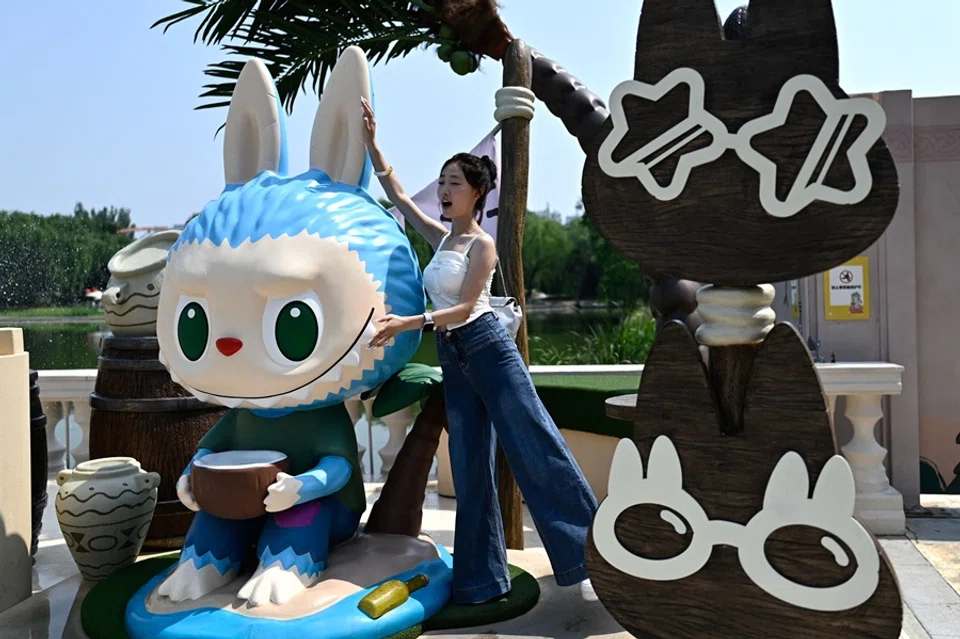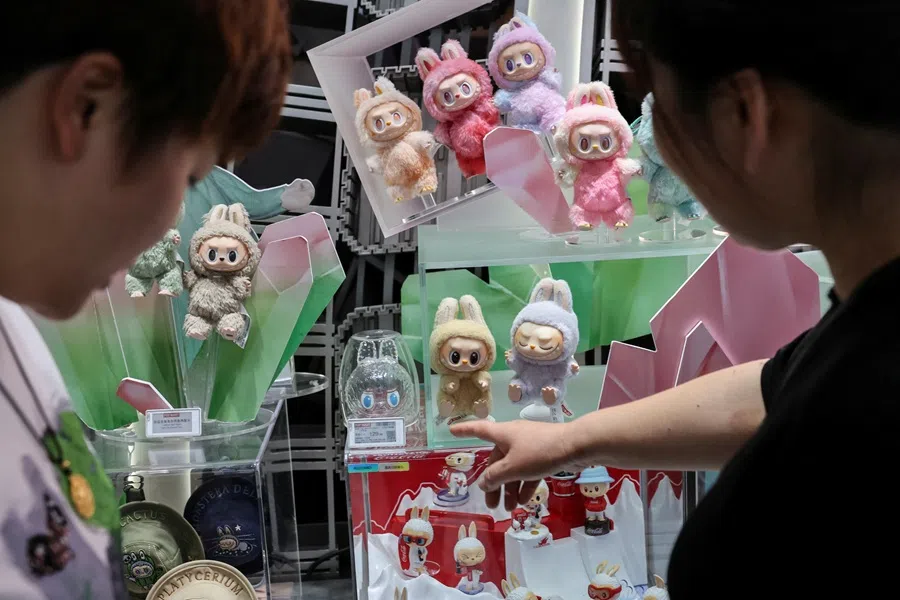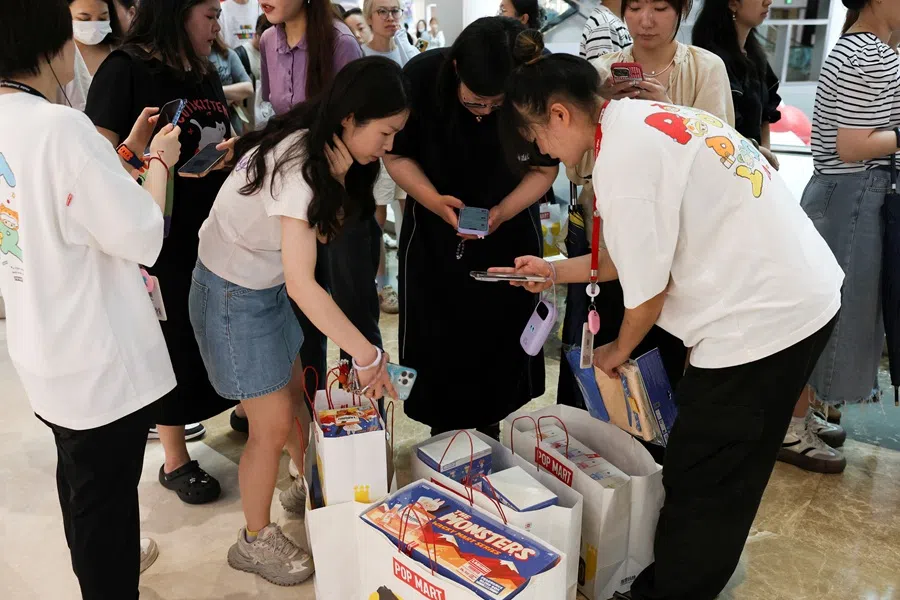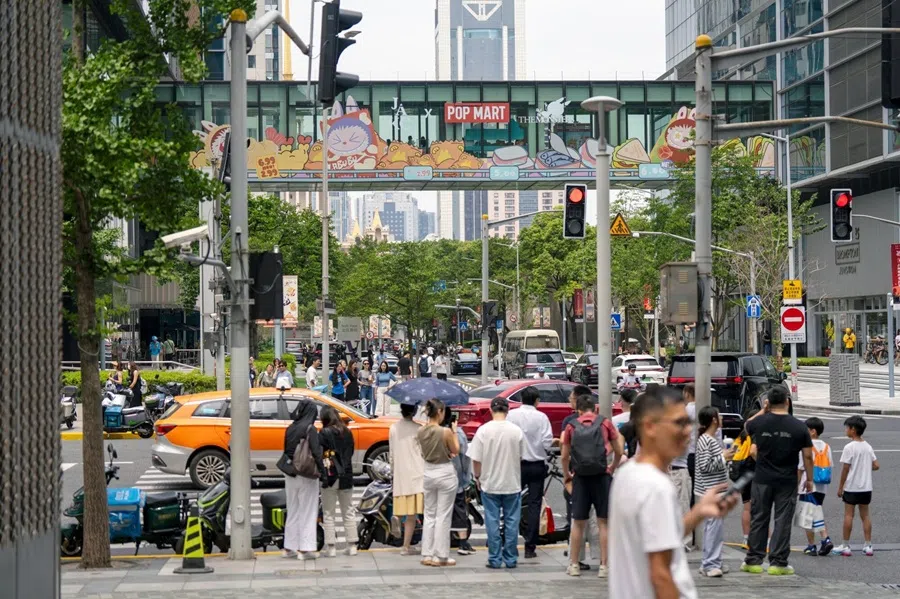Labubu: China’s new global influencer?
Looking at the way China is harnessing viral pop culture, digital storytelling and youth-driven branding to subtly reshape international perceptions, researcher Genevieve Donnellon-May weighs up China’s soft power wins and continued weaknesses.

What does it take to rebrand a global superpower in the age of TikTok, collectibles and celebrity endorsements?
China’s global image has long fluctuated between admiration and suspicion. Traditional cultural diplomacy tools — Confucius Institutes, CGTN, CCTV and heritage campaigns — have struggled to break through scripted, state-led narratives. Yet a new trend has emerged: China is harnessing viral pop culture, digital storytelling and youth-driven branding to subtly reshape international perceptions more effectively.
A vivid symbol of this shift is Labubu (拉布布), a wide-eyed, snaggle-toothed elf created by Hong Kong-born artist Kasing Lung. Inspired by Nordic folklore and debuting in his 2015 storybook The Monsters, Labubu achieved mass appeal following Lung’s partnership with Chinese collective toy company Pop Mart in 2019.
In 2024, the company posted a gross profit margin of nearly 67%, and sales are projected to reach US$6 billion by 2027 — a 500% increase from 2023.
Collector’s item, cultural ambassador and global phenomenon
Labubu’s meteoric rise exemplifies how China’s soft power is increasingly driven by commercial creativity and global consumer culture. “Blind boxes” — where customers do not know what Labubu they have bought until opening the box — fuel anticipation, emotional investment and repeat purchases. This is seen especially with younger, digital-native consumers sharing content on Western and Chinese social media platforms.
Since 2019, Pop Mart has released more than 300 Labubu variants — ranging from standard designs to limited editions and high-profile collaborations. By early 2025, it was clear Labubu had a global phenomenon. Over 1.4 million TikTok videos featured the toy, and fans queued for hours outside stores from Sydney to Los Angeles. Celebrities like Rihanna, David Beckham and Blackpink’s Lisa spotted with their collections, while Brad Pitt and the cast of F1: The Movie posted a Labubu unboxing video on TikTok — cementing its crossover into mainstream Western pop culture.

This global buzz has translated into staggering business success. According to Caixin Global, Pop Mart is now the world’s third-most-valuable IP brand — after Disney and Nintendo. As of mid-2025, the company operates around 200 retail stores and over 2,500 automated “robo shops” worldwide.
Success is clear. The company’s market value soared to US$43 billion. In 2024, the company posted a gross profit margin of nearly 67%, and sales are projected to reach US$6 billion by 2027 — a 500% increase from 2023. Limited editions regularly resell for over US$3,000 to more than US$230,000 and US$139,000 at auctions.
This reflects a shift in China’s soft power ambitions — one built not on slogans but on storytelling, identity, and emotional resonance through global consumer culture.
International markets are driving growth. Overseas sales are expected to surpass domestic ones, with over 70% of sales of US and European revenue now coming from local consumers. In Q1 2025 alone, American and European sales jumped 900% and 600% respectively year-on-year, far outpacing China’s 100% growth.
Beijing has taken notice. In response to Labubu’s global success, a foreign ministry spokesperson in June remarked that such collectibles help “break the information cocoon” and show the world “an ever-cooler China”. This reflects a shift in China’s soft power ambitions — one built not on slogans but on storytelling, identity, and emotional resonance through global consumer culture.
Viral cultural symbols and soft branding: beyond traditional diplomacy
Labubu’s rise marks a shift in China’s soft power from top-down state-led projects like the Belt and Road Initiative to emotionally resonant, bottom-up cultural exports. This shift echoes earlier East Asian models — Japan’s Cool Japan and South Korea’s Korean Wave — but differs in that China’s recent successes stem more from a commercially driven creative economy than coordinated, centralised planning.

Fuelled by TikTok fandoms, celebrity endorsements and viral storytelling, Labubu exemplifies a third soft power model: market-driven and emotionally engaging rather than state-controlled or purely grassroots. This reflects China’s concept of “IP consumption”, where audiences connect with characters and brands as expressions of personal identity and aspiration, akin to Disney, Hello Kitty and Pokémon.
Labubu is more than a collectible — it is a soft power asset, symbolising a modern, globally connected China. By embedding cultural meaning in entertainment and consumerism, it demonstrates how viral symbols can subtly reshape national image-making.
Labubu’s viral success follows the same pattern — a niche collectible transformed into a global cultural icon through fandom and social media sharing.
Digital platforms are now central to China’s soft power, shifting from state-led narratives to influencer-driven content that appeals to younger global audiences. Creators across China and its diaspora use TikTok (Douyin), YouTube, and Instagram to showcase food, fashion, craftsmanship and daily life, offering intimate, culturally rich portrayals of China.
Li Ziqi epitomises this trend with cinematic videos of rural life, crafts and traditional cooking that attract over 27 million YouTube subscribers and nearly 28 million fans on Chinese social media Sina Weibo. Similarly, Dianxi Xiaoge, a Chinese food vlogger, highlights Yunnan’s cuisine and village culture to nearly 12 million subscribers on YouTube. Doing so helps provide audiences with an authentic image grounded in heritage, quietly countering dominant geopolitical and authoritarian narratives.
This aesthetic storytelling reflects “soft nationalism”, expressing cultural pride through emotion and lived experience rather than ideology. It builds trust and relatability, especially among digital-native youth seeking authenticity. Labubu’s viral success follows the same pattern — a niche collectible transformed into a global cultural icon through fandom and social media sharing. Collectively, these creators and cultural symbols drive a bottom-up, emotionally resonant soft power strategy that is reshaping global perceptions of China.
Strategic context: timing and global power shifts
China’s soft power resurgence occurs amid a global realignment. As US favourability declines due to domestic polarisation and retreat from global leadership, Beijing can capitalise on the opportunity. Public opinion suggests this is already happening. As of end May, Morning Consult data across 41 countries showed China’s net favourability at +8.8, easily surpassing the US at -1.5. While Washington scales back foreign aid and multilateral engagement, Beijing projects a modern, tech-savvy, lifestyle-oriented image through expanded cultural diplomacy, bolstering domestic morale amid domestic economic challenges.

Yet this momentum remains fragile. Cultural phenomena like Labubu spark global interest, but without sustained emotional depth and authentic narratives, their appeal may wane. In a crowded media landscape, trust matters as much as visibility — and China’s credibility is contested. Despite successes in digital influence and viral content, concerns over human rights, censorship, and authoritarian governance persist, limiting the reaches of soft power.
Admiration for Chinese creativity often coexists with scepticism of its political system.
Asia Society’s Global Public Opinion on China reveals this ambivalence. From nearly 2,500 surveys since 2000, China’s global image remains mixed — 29% favourable versus 26% unfavourable. Between 2019 and 2021, net favourability dropped nearly 15 points in the US, Europe, and Australia, and fell 18 and 12 points in Latin America and South Asia, respectively. In contrast, sentiment stabilised or improved in Southeast Asia, the Middle East and Africa, where China’s development aid and infrastructure investments have stronger traction.
China’s expanding influence also draws scrutiny for “sharp power” tactics. While cultural exports can portray a different side of China, anxieties over Beijing’s strategic intentions in other countries remain. Admiration for Chinese creativity often coexists with scepticism of its political system. This tension is heightened by digital contradictions: platforms like YouTube and Instagram may amplify Chinese content abroad but remain difficult to access due to the country’s “Great Firewall”, thereby undermining narratives of openness.
Engaging younger, global audiences
China’s soft power strategy is quietly evolving — from traditional symbols like pandas and official diplomacy to digital creators, pop culture and emotionally resonant branding. By engaging younger, global audiences with relatable and culturally rich content, China is crafting a subtler, more agile global image. Whether this represents a lasting transformation or a timely rebrand amid US disengagement remains uncertain.
Nonetheless, China’s expanding cultural and digital presence is already reshaping perceptions — not just as a rising power, but as a creative and connected one. In today’s world, where perception drives influence, this shift carries significant geopolitical weight.



![[Big read] Love is hard to find for millions of rural Chinese men](https://cassette.sphdigital.com.sg/image/thinkchina/16fb62fbcf055b710e38d7679f82264ad682ce8b45542008afeb14d369a94399)
![[Big read] China’s 10 trillion RMB debt clean-up falls short](https://cassette.sphdigital.com.sg/image/thinkchina/d08cfc72b13782693c25f2fcbf886fa7673723efca260881e7086211b082e66c)
